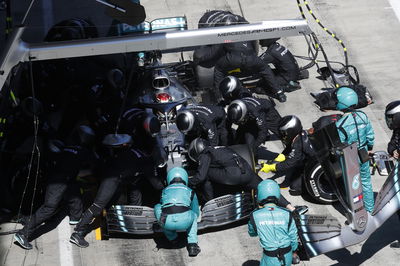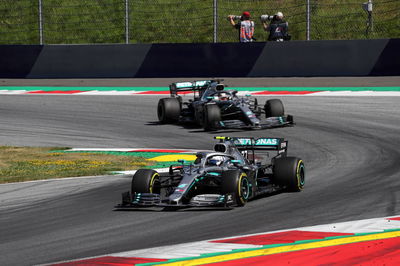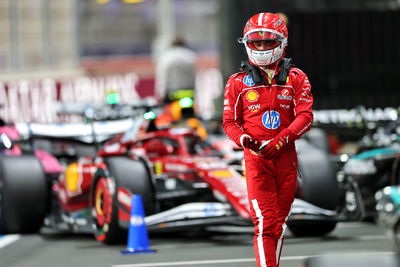Mercedes reveals extent of Hamilton’s front wing damage
Mercedes has revealed the extent of the front wing damage Lewis Hamilton picked up during Formula 1’s Austrian Grand Prix, explaining how much it impacted his race.
TV coverage showed Hamilton repeatedly running wide over the kerbs in the early stages of last weekend’s race and he suffered damage to his front wing following a wide moment coming out of the final corner shortly prior to his scheduled pit stop.

Mercedes has revealed the extent of the front wing damage Lewis Hamilton picked up during Formula 1’s Austrian Grand Prix, explaining how much it impacted his race.
TV coverage showed Hamilton repeatedly running wide over the kerbs in the early stages of last weekend’s race and he suffered damage to his front wing following a wide moment coming out of the final corner shortly prior to his scheduled pit stop.
The incident dislodged the flap adjuster on the front wing of Hamilton’s W10, causing the world championship leader to lose significant downforce despite the damage appearing minimal aesthetically.
“He was running on the kerb at Turn 10 and the flap adjuster broke,” Shovlin said in the team's post-race 'Pure Pitwall' debrief video.
“That’s the thing we use to change the angle of the flaps on the left and right side of the wing, that changes how much downforce it produces and this is one of the main tools the drivers and the engineers use to balance the car, they are trying to put more load on the front.
“When it broke on that kerb, it drops down. It only drops by a few degrees but it means that he’s got understeer then in all those fast corners."
Mercedes subsequently changed Hamilton’s front wing during his pit stop which took around 11 seconds and resulted in him losing a position to Red Bull driver Max Verstappen.
Shovlin revealed that the loss of around eight extra seconds in the pit stop was significantly less time than Hamilton would have conceded over the remainder of the race had the team opted not to replace the front wing.
“Now, there were two things we were talking about,” he explained. “One; do we come in and go to the maximum angle we can achieve on the other side to improve that balance, or do we change the nose.
“We were looking at the readings we were getting on that wing, trying to understand if there was the range to do it, just by adding more wing on the other side of the car and it was quite clear that wouldn’t be enough.
“So that was then we had to take the pit stop, which is about an additional eight seconds, but overall that would have been quicker for the race as a whole, because he would of otherwise been slower by at least half a second a lap.
“Pitstop practice we do really every day of the race weekend, and the front wings, we’ll normally do a couple of practice front wing changes in each pit stop practice,” he added.
“It’s not something that we have to often do during the race, we probably only do one or two a year in anger but they are difficult things to get on and off, they are quite heavy, they are very big now and you have to coordinate that around the wheel changes that are going on.
“But we make sure the guys are all well-versed in doing it so that we need to do one like we did on Sunday, we know how long it takes and we know that we can do it reliably.”












